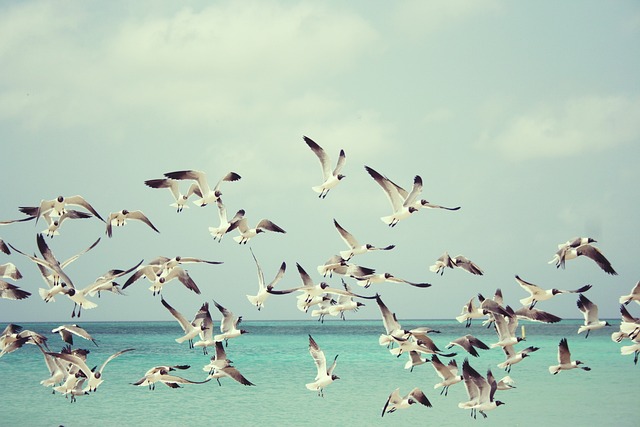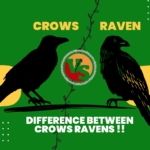Birds are very fascinating creatures with strange courtship rituals and reproductive processes. If you ever wondered how birds mate, this article is going to detail and SEO friendly explanation. You might be either a bird enthusiast, pet owner, or someone who is curious about the way birds mate and reproduce, how baby birds’ lifecycle works; this guide is for you.
Understanding Bird Mating Behavior

Birds have another mode of reproduction, different from mammals: they are known for some distinctive complex mating behaviors. Birds are known for elaborate courtship displays, singing, and the unusual body movements, which facilitate their mating for the productive outcome of reproducing them.
Courtship Rituals in Birds
The courtship of birds is the most important step before becoming mates. Virtually all bird species conduct pompous shows to attract a mate. Some common courtship behaviors are:
- When Birds Sing: Male birds most frequently sing beautiful melodies to attract females. Examples include the nightingale and the canary and so on.
- Dancing: Cranes and some varieties of parrots are known for their special dances as part of courtship.
- Feeding Ritual: Some birds provide food to their potential mates as a gesture of love and strength.
- Bright Colors and Displays: The male birds, such as peacocks, show bright feathers for females.
- Aerial Display: Birds like hawks and eagles will fly around to show prowess to attract their mate for reproduction.
These mating behaviors help the bird select its healthiest and most suitable mate for the reproductive process.
The Mating Process in Birds
How Do Birds Physically Mate?
Birds do not have external reproductive organs like mammals. Instead, both males and females have a cloaca, which is a single opening for excretion and reproduction. Mating occurs by the “cloacal kiss.” This is when the male and female bird briefly touch their cloacas to transfer the sperm.
The Steps of Bird Mating:
- The male mounts the female.
- Both the birds face each other’s cloacas.
- The male puts sperm into the body of the female reproductive tract.
- The sperm inside the female’s body travel to fertilize the eggs.
- It is very fast; it may even take a few seconds, but very effective.
Fertilization and Egg Formation
What Happens After Mating?
The sperm enters the female’s reproductive system, and then fertilization takes place internally. The fertilized egg develops inside the female’s body before laying.
- Egg Development: The fertilized egg passes down the oviduct where protective layers such as the shell are acquired.
- Laying of eggs: Female birds lay the eggs in a nest she prepares alone or assisted by the male bird.
- Incubation: Both parent birds incubate the eggs and turn the eggs so they are always warm when hatching.
How Do Birds Care for Their Young?
Parental Roles in Bird Reproduction
Birds are known to be extremely careful and dedicated to raising their young. However, the degree of parental investment differs from one species to another:
- Monogamous Birds: Most birds, such as swans and eagles, stay in long-term pair bonds and share parental duties.
- Polygamous Birds: In some species, such as chickens, no strong pair bond is formed and females raise the young alone.
- Altricial vs. Precocial Birds: Altricial birds hatch helpless and totally dependent on parental care. Such birds are pigeons and sparrows. Other birds hatch with feathers and move about within hours of hatching. Examples of such birds include ducks and chickens.
Feeding and Protecting Chicks
Parent birds are hardworking. They will feed their young. They will regurgitate food or go out hunting insects for their young. Another big responsibility is protecting their young from predators. Some birds will fiercely defend their nests.
Interesting Facts About Bird Mating
- In some cases, birds mate for life. Examples include swans, eagles, and albatrosses.
- Not all birds make nests; some lay eggs in burrows, tree hollows, or directly on the ground.
- Some species of male birds are viciously competitive. Some even fight over females.
- Some eggs are white, while others are speckled, or even blue.
FAQ’s
Birds mate using a process known as the cloacal kiss. The male and female touch cloacas briefly and transfer sperm for fertilization. This quick action fertilizes the female’s eggs for reproduction.
Yes, most birds have only one opening known as the cloaca used in excretion, mating, and laying eggs. The multi-use of this organ has made birds fly because their bodies are lighter. But a penis is possessed by some birds like ducks.
Birds don’t become “pregnant” like mammals. Instead, the male transfers sperm to the female through a cloacal kiss – brief touching of cloacas. The sperm fertilizes the egg inside the female, which is then later laid, but continues to develop outside.
Yes, birds can lay eggs without mating; however, the eggs will be unfertilized and will not hatch into chicks. Many domesticated birds, such as chickens and parrots, lay eggs without a male, just like hens laying eggs for consumption.
Birds demonstrate a desire to mate by engaging in courtship behaviors such as singing, dancing, feeding their mate, showing bright feathers, and aerial displays. These activities attract a mate and signal the readiness of an individual to reproduce.
Conclusion
The mating habits of birds are very interesting, as they give insight into their behavior and survival strategies. From elaborate courtship rituals to dedicated parenting, birds show impressive reproductive instincts. Whether you watch wild birds or have pet birds, understanding their mating habits deepens your connection with these incredible creatures.









